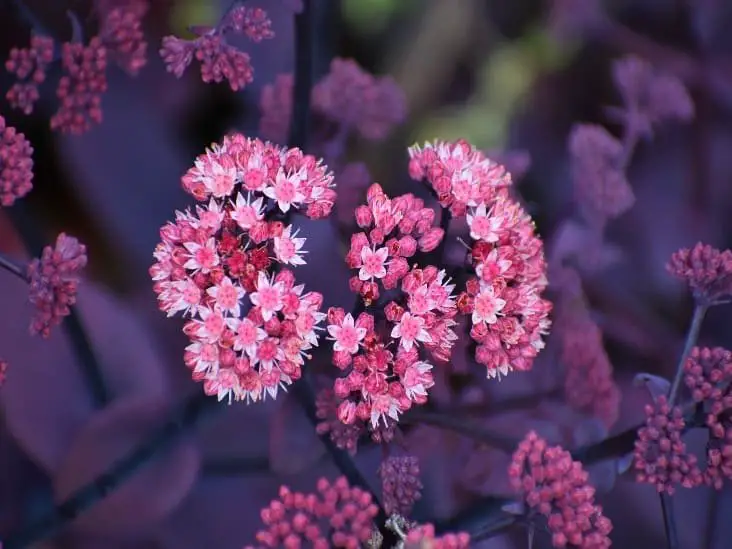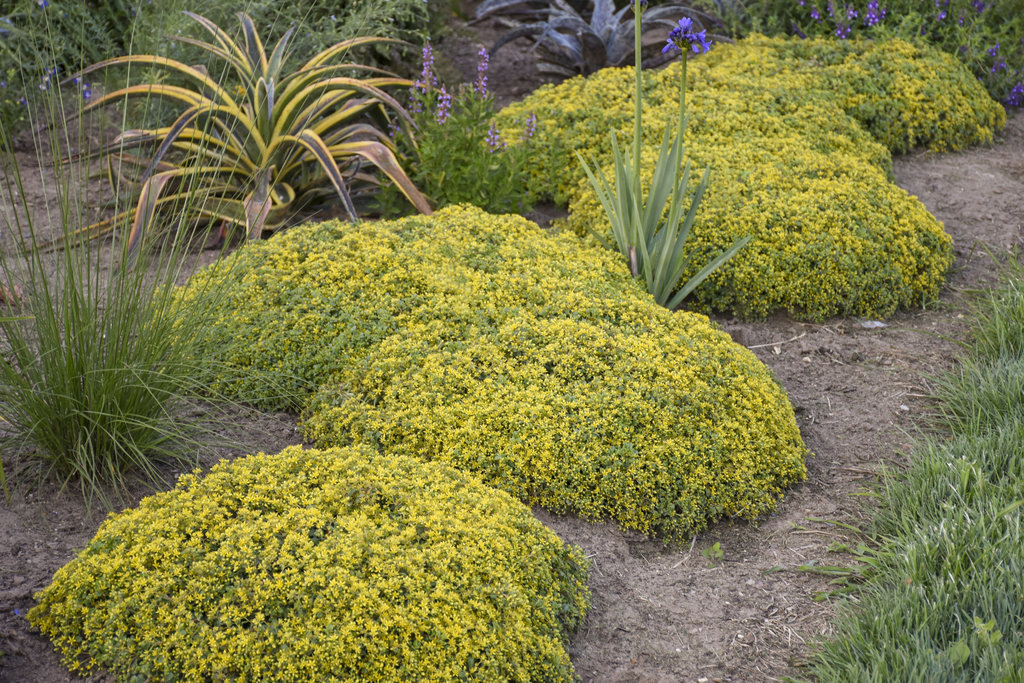Ultimate Guide: How To Care For Sedum (Stonecrop) Plant

Sedum, or stonecrop, is a large genus of succulent plants that are easy to grow and care for. Sedums are native to Europe, Asia, and North America, and can be found in a wide variety of climates. They are drought-tolerant and thrive in well-drained soil.
Many sedums have attractive flowers that bloom in the summertime.
Hardy Sedum (Stonecrop) Succulents 101 – Care Tips & Unique Traits
Sedum (Stonecrop) plants are beautiful, drought-tolerant succulents that make great additions to any garden. They are easy to care for and require very little maintenance, making them perfect for busy gardeners or those new to plant care. Here is everything you need to know about how to care for your Sedum plant:
Light: Sedum plants prefer full sun but can tolerate some light shade. If you live in a hot climate, it’s best to give them some afternoon shade to prevent scorching.
Water: These succulents are very drought-tolerant and only need to be watered once every week or two.
During the winter months, they can go even longer without water. When watering, be sure to soak the soil thoroughly and then allow it to dry out completely before watering again. Over-watering can lead to root rot, so err on the side of too little rather than too much water.
Fertilizer: Sedums don’t require a lot of fertilizer, but a light feeding once or twice a year will help them stay healthy and looking their best. Use a balanced fertilizer formulated for succulents and cacti and apply it at half the recommended strength.
Pruning: Sedums don’t require pruning, but if you want to control their shape or size, you can trim them back after blooming has finished in late summer or early fall.
Be careful not sedums that have already started producing offsets (baby plants), as these can be easily damaged when pruning.
Can You Plant Sedum in the Fall
It’s not too late to add some color to your garden! Sedum is a great plant to add to your fall garden. Here are a few tips on how to successfully plant sedum in the fall:
1. Choose a location that receives full sun. Sedum will do best in an area that gets at least six hours of direct sunlight each day.
2. Prepare the soil by loosening it with a shovel or tiller.
You want the soil to be loose so that the roots can easily spread out and take hold.
3. Amend the soil with compost or other organic matter. This will help provide nutrients for the plants as they establish themselves.
4. Water the plants well after planting, and then water them regularly (about once per week) throughout the growing season. Fall is typically a drier time of year, so make sure to give your sedum plants enough water.
5..
When selecting sedum plants, look for varieties that are known to be drought-tolerant such as ‘Autumn Joy’ or ‘Dragon’s Blood’. These varieties will do well even in dry conditions.
How to Plant Sedum in the Ground
Sedum is a beautiful, easy-to-grow succulent that can add color and interest to your landscape. Sedum is perfect for rock gardens, xeriscaping, or as an accent plant in mixed beds. Here are some tips on how to plant sedum in the ground:
1. Choose a sunny location with well-drained soil. Sedum does not like wet feet, so make sure the area you select has good drainage. If your soil is heavy or clay-like, consider amending it with sand or grit to improve drainage.
2. Prepare the planting bed by loosening the soil and removing any weeds or debris. You can also add a layer of compost to help nourish your plants.
3. Once you have prepared the bed, it’s time to plant!
Place your sedum plants 18 inches apart and press them gently into the soil so that they are snug but not cramped. Water them well after planting.
4. Be patient!
It can take several weeks for sedum plants to become established in their new home and start growing vigorously. Once they do, they will be relatively low maintenance – just water them occasionally during periods of drought and enjoy their beauty!
Growing Sedum in Containers
Sedum is a genus of succulent plant that includes more than 400 species. Sedums are easy to grow in containers and make excellent houseplants. They are drought tolerant and can tolerate some neglect, making them ideal for busy people or those new to gardening.
When growing sedum in containers, choose a pot with drainage holes and use a well-draining potting mix. Water sedum when the soil is dry to the touch and provide bright, indirect light. Allow the soil to dry out completely between waterings to prevent root rot.
Fertilize monthly during the growing season with a balanced liquid fertilizer diluted by half.
To propagate sedum, take stem cuttings in spring or summer and root them in moist sand or perlite. Sedum can also be propagated from leaf cuttings; simply place a leaf on top of moist potting mix and wait for it to produce roots before transplanting into its own pot.
Sedum Winter Care
Sedum are a hardy group of succulents that can tolerate a wide range of conditions, but there are a few things to keep in mind when caring for them in winter. Here are some tips:
1. Reduce watering.
Sedum do not need as much water in winter as they do in summer. Allow the soil to dry out completely between watering.
2. Protect from frost.
If your area experiences frosty weather, it’s best to move your sedum indoors or protect them with a layer of mulch or fabric.
3. Cut back on fertilizer. Fertilizing is not necessary and can actually harm sedum in wintertime.
Too much fertilizer can cause the plant to produce lush growth that is more susceptible to damage from cold weather conditions.
4. Provide bright light.
Sedum Plant
Sedum is a hardy, sun-loving plant that’s easy to grow. It comes in many different varieties, each with its own unique color and texture. Sedum is an excellent choice for rock gardens, ground cover, or as a border plant.
Sedum grows best in full sun and well-drained soil. It’s tolerant of drought and poor soil conditions. Once established, sedum is relatively low maintenance.
Water it sparingly and fertilize only if needed.
To propagate sedum, simply take stem cuttings in late spring or early summer. Place the cuttings in moist potting mix and keep them warm until they root (usually within 2-3 weeks).
Once rooted, transplant the cuttings into their permanent location outdoors.

Credit: www.provenwinners.com
How Do You Care for Stonecrop Sedum?
Stonecrop sedum (Sedum spurium) is a low-growing, mat-forming succulent that produces pretty pink or white flowers in summer. It’s an easy plant to grow and care for, making it a great choice for beginners. Here’s how to care for stonecrop sedum:
Light: Stonecrop sedum does best in full sun to partial shade. In very hot climates, it appreciates some afternoon shade.
Water: Water stonecrop sedum when the soil is dry to the touch.
Allow the soil to dry out completely between waterings to prevent root rot. During the winter months, water even less frequently, only once every few weeks or so.
Soil: A well-draining cactus or succulent mix is ideal for stonecrop sedum.
If your pot doesn’t have drainage holes, be sure to add some rocks or gravel to the bottom before adding your plants and soil. This will help with drainage and prevent overwatering.
Fertilizer: Fertilize stonecrop sedum monthly during the growing season (spring through summer) with a balanced fertilizer diluted by half.
No need to fertilize during the winter months when growth slows down.
Do You Cut Back Stonecrop Sedum?
Stonecrop sedum (Sedum spp.) is a succulent plant that is often used as groundcover or in rock gardens. It is drought tolerant and can tolerate some neglect, but it will look its best if you cut back the spent flowers and dead leaves regularly. You can do this with either pruning shears or by pinching them off with your fingers.
What is the Difference between Sedum And Stonecrop?
The main difference between sedum and stonecrop is that sedums have leaves that are arranged in opposite pairs while stonecrops have leaves that alternate along the stem. Both plants are succulents, meaning they store water in their fleshy leaves, stems, or roots. This adaptation allows them to survive in dry conditions.
Sedums are native to Europe and Asia while stonecrops are found throughout North America.
What is the best way to propagate Sedum (Stonecrop) plants?
When it comes to propagation techniques for sedum (Stonecrop) plants, using stem cuttings is a common and effective method. Simply take a healthy stem cutting, remove the lower leaves, and allow it to dry for a few days. Then, plant the cutting in well-draining soil and keep it lightly moist. With time and proper care, the cutting will develop roots and grow into a new Sedum plant.
How Do You Keep Sedum Looking Good?
Sedum, also known as stonecrop, is a succulent plant that is easy to care for and maintain. Here are some tips on how to keep your sedum looking good:
1. Sedum thrives in well-drained soil.
Be sure to provide adequate drainage for your plant by using a pot with drainage holes or by planting it in a raised bed.
2. Sedum needs full sun to partial shade. Give your plant at least six hours of direct sunlight each day.
3. Water sedum when the soil is dry to the touch. Allow the soil to completely dry out before watering again. Overwatering can lead to root rot and other problems.
4. Fertilize sedum once a month during the growing season (spring and summer) with a balanced liquid fertilizer diluted according to package directions. Skip fertilization during the fall and winter months when growth slows down or stops altogether.
Conclusion
Sedum (Stonecrop) plants are easy to grow and require little maintenance. They are drought tolerant and can be grown in full sun or partial shade. Stonecrops are perfect for rock gardens, borders, edging, and ground cover.
They come in a variety of colors including green, yellow, pink, purple, and red.
To care for your Sedum plant, water it deeply once a week during the growing season. Allow the soil to dry out between watering.
Fertilize your Sedum plant twice a year with a balanced fertilizer. Prune Sedum plants in early spring to encourage new growth.